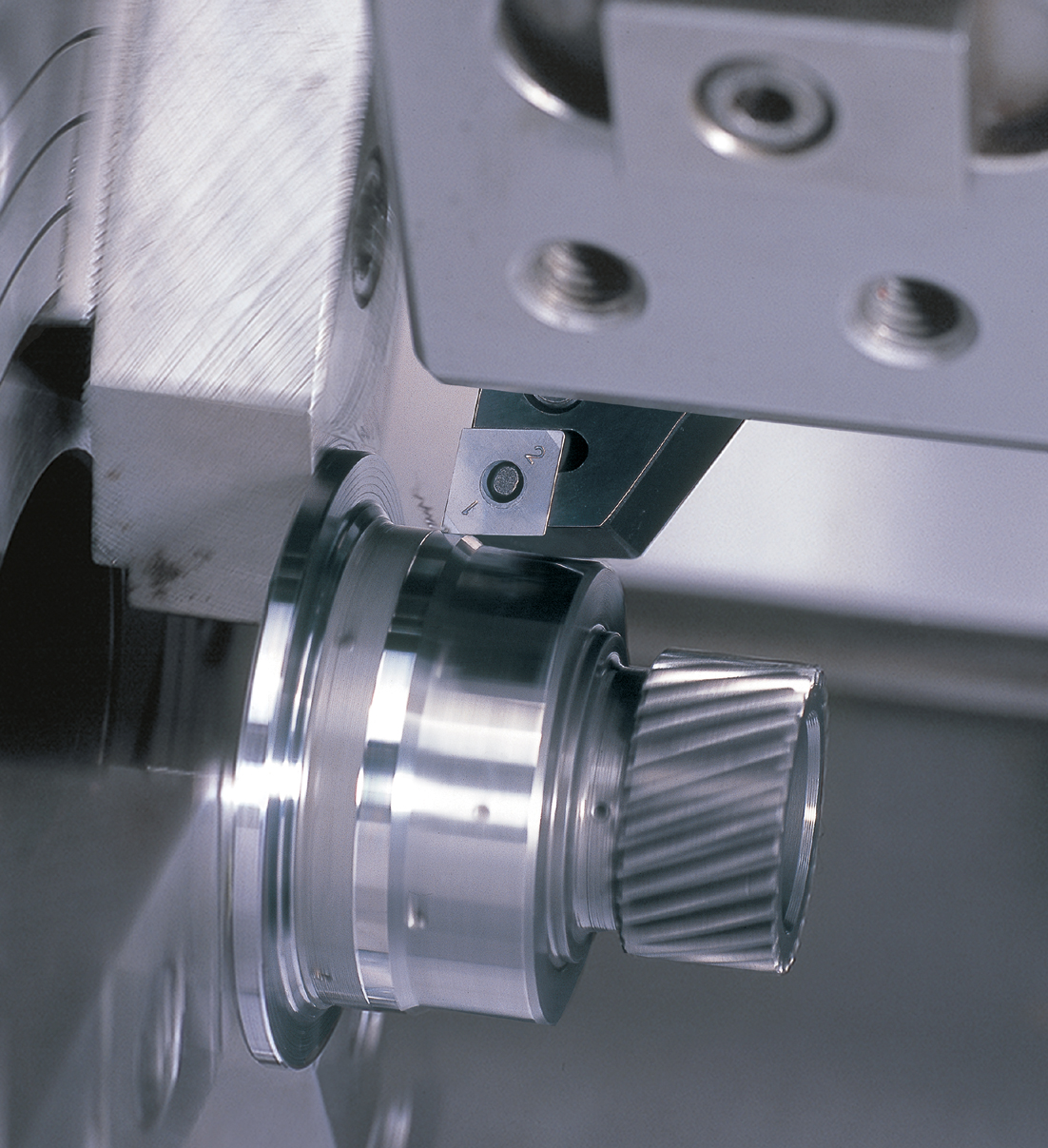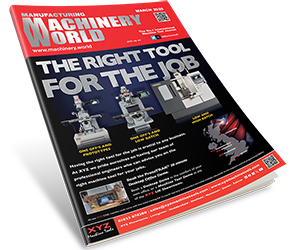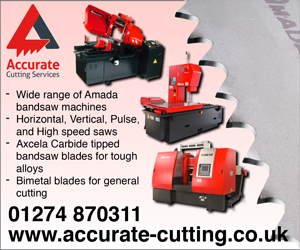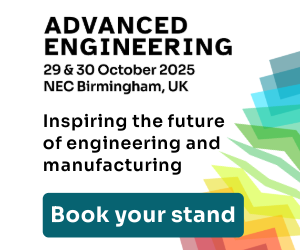Sumitomo Electric Hardmetal has developed a totally new tooling system called High Feed Turning (HFT) that enables higher productivity when turning materials such as hardened steel over 45 HRC at higher speed and feed rates. As a result, processing cycles can now be 12 to 16 times faster when compared against well-proven methods while obtaining enhanced surface finish.
Adding to the benefits gained from HFT is the practicality around the specific design of octagon insert that incorporates special wiper geometry able to enhance surface finish. Following successful trails, it is recorded that insert life can be doubled, aided by the availability of the eight cutting edges from the new CBN insert.
CBN tooling has the hardness and thermal conductivity second only to diamond so is highly productive when machining heat resistant super alloys, grey cast irons and hard powdered and sintered metals which contain tungsten and titanium carbide. Indeed, CBN inserts can also be used dry and by eliminating coolant means further savings including coolant disposal and the need for recurrent maintenance is reduced.
The monoblock design of the HFT toolholder features a specially developed insert location giving speedy and accurate exchange catering for turning, boring and facing with machine interface couplings available in HSK, VDI, ISO-PSC and DIN shanks. The double-clamp insert system ensures greater stability of the insert with a direction defined coolant / air supply through the holder.
In recent hard turning trials HFT inserts were run at 150 m/min and 1.2 mm/rev to achieve over 1,200 parts per insert. Previous methods in use were at slower cutting speeds but only achieved 100 parts per insert. Similarly, for finishing cuts, previous tool life was 100 parts per insert however, HFT enabled this to be increased to 1,600 parts along with speed increases from 120 m/min to 150 m/min.
The latest advances in CBN tooling involve special compounds, high efficiency coatings and new geometries to withstand heat, further improve surface finish and accommodate greater mechanical shocks such as those generated in interrupted cuts. For instance, Sumitomo recently introduced a ‘hybrid’ BNC2010 and BNC2020 series of hard turning inserts involving new chipbreaker designs and a new range of BSME and SEXC micro-boring bars for holes as small as 2.5 mm diameter. The new product launches add to its highly successful SumiBoron range of CBN tooling that now also covers milling and end milling cutters, plus tools used for turning, grooving, threading and boring.
Various CBN insert edge preparations are available for different hard metal turning applications when using Sumitomo Electric Hardmetal’s BNC2010 and BNC2020 inserts. This enables specific process situations and problems to be overcome giving higher stability and greater operational consistency. Both the SumiBoron BNC2010 high precision grade and more general purpose BNC2020 feature multi-layered, heat and wear resistant micro-structured coatings on sintered CBN powder blanks with a substrate that incorporates a carbonitride binder.
To further improve performance and application of the new grade inserts, the company has also developed a totally new series of ‘Break Master’ chipbreakers, N-FV, N-LV for finishing hardened steel and N-SV for improved chip control when removing a carburised layer. As a result, these inserts are able to demonstrate high orders of positive application advantages.
Recent trials against more conventional coated CBN inserts used for hard turning of transmission shafts, BC2010 inserts improved tool life by 230 per cent and when BC2020 was applied for turning automotive constant velocity joints, which featured interrupted cutting in the machining cycle, tool life was increased by 150 per cent.
By extending CBN to micro-boring bars, the BSME and SEXC series are designed for ultra-small holes as fine as 2.5 mm diameter in hardened materials which can be finished bored. The tools can also be used for facing. Both tool types have through coolant and each tool shank across the range can be held in a common 6 mm diameter sleeve with two clamp screws. A location dead-stop pin ensues repeatability when setting depths which can be maintained within just 0.02 mm.
Recent trials on sliding head turn-mill centres using brazed SumiBoron BSME micro-boring bars on HRC 60 material with neat oil coolant, tool life was increased from an inconsistent variable between 400 and 1,500 parts to a reliable 3,600 parts. The cutting speed was 48 m/min with a feed rate of 0.2 mm/rev and depths-of-cut between 0.02 to 0.05 mm. And when producing 7.1 mm diameter holes in hardened automotive components, the switch to Sumitomo’s SEXC bore bar the recorded number of parts produced per insert corner increased by over 400 per cent.
An important advantage gain from the use of CBN is that heat generated in the cutting process is despatched within the chipped material and not held in the tool or influencing the resulting workpiece. In effect, the machining process tends to anneal any material just ahead of the cutting zone leaving the parent material unaffected.
When hard turning materials above 45 HRC such as bearings, gears and toughened shaft work is the ability to eliminate the grinding process, hand polishing and other time consuming, often highly skill dependent and difficult to control processes. Also, through turning involving single operational strategies important geometrical relationships are easier to maintain. Thus, eliminating grinding creates a greater payback on plant, any associated equipment, component production costs and labour charges. It also benefits further reductions in lead time and process control while allowing the machining process to be streamlined.
It is often argued that potential users of CBN must have the advantage of the latest CNC turning or turn-milling centres. While this can be beneficial, the latest insert developments to expand the tooling portfolio of Sumitomo Electric Hardmetal, the world’s first developer of SUMIBORON CBN technology in 1977 followed by higher performance coated CBN in 2000 for hard turning applications, means applications are constantly widening in the drive for higher productivity.







